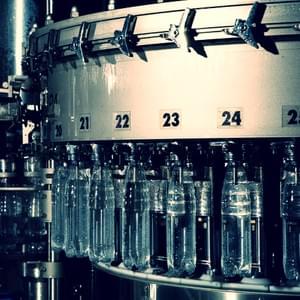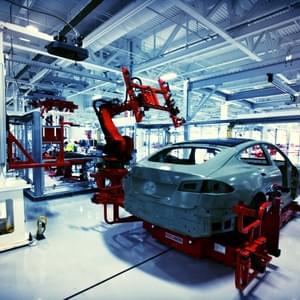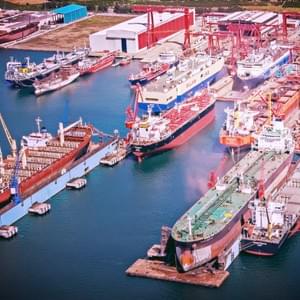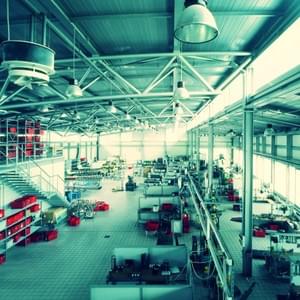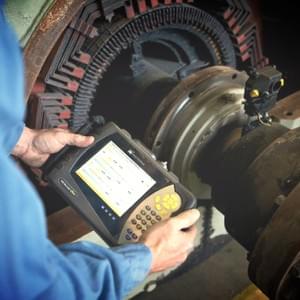
main·te·nance
the process of maintaining or preserving someone or something,
or the state of being maintained.
synonyms:preservation, conservation, keeping, prolongation, perpetuation, caronrying, continuation, continuanceantonyms:breakdown, discontinuation
the process of keeping something in good condition.
what ıs the maıntenance ?
Maintenance is defined as the combination of all technical and administrative processes that require the continuity of an element. These processes is applied in order to protect and bring it to its former position. It is a structure that was built on the foundations of science and technology, so the grant of maintenance begins with a definition of maintenance. A lot of misunderstanding lie under this definition, because maintenance does not always occur as planned also must be considered the adverse conditions. When we look at the detail, these adverse conditions better has been accepted in the mindset of maintenance management and practices of maintenance personnel.
MAINTENANCE MANAGEMENT
Maintenance management encloses managing maintenance organization and leading the process.
All the activities of the management that determine urgency of the sitution (defines as targets assigned and accepted by the management and maintenance department) or the maintenance objectives , strategies (defines as a management method in order to achieve maintenance objectives) and responsibilities and execute them by means such as maintenance planning, maintenance check and arranging budget and several improving methods including economical aspects in the organization.
There are three types of maintenance tasks:
- breakdown maintenance
- corrective maintenance
- preventive maintenance
The main differences between these three types occurs in the case of regular maintenance or repair
Breakdown maintenance; repair does not apply unless there is a malfunction in the machine. That mean the following that employees does nothing until fault occurs and try to fix it. In the beginning, it's hard for them to take a step but afterwards they can't run away from taking a hundred step. Such a thing could be used when the equipment failure does not significantly affect the operation or production or generate any significant loss other than repair cost.
Preventive maintenance tasks are implemented before a problem is evident. It is a daily maintenance ( cleaning, inspection, oiling and re-tightening ), design to retain the healthy condition of equipment and prevent failure through the prevention of deterioration, periodic inspection or equipment condition diagnosis, to measure deterioration. It is further divided into periodic maintenance and predictive maintenance. Just like human life is extended by preventive medicine, the equipment service life can be prolonged by doing preventive maintenance. Periodic maintenance; time based maintenance consists of periodically inspecting, servicing and cleaning equipment and replacing parts to prevent sudden failure and process problems. Predictive maintenance; this is a method in which the service life of important part is predicted based on inspection or diagnosis, in order to use the parts to the limit of their service life. Compared to periodic maintenance, predictive maintenance is condition based maintenance. It manages trend values, by measuring and analyzing data about deterioration and employs a surveillance system, designed to monitor conditions through an on-line system.
Corrective maintenance are scheduled to correct specific problems that have been identified in plant systems. It improves equipment and its components so that preventive maintenance can be carried out reliably. Equipment with design weakness must be redesigned to improve reliability or improving maintainability.
“If you don’t have time to do it right, you must have time to do it over.”
– John Wooden
PREVENTIVE MAINTENANCE
Preventive maintenance program will utilize regular evaluation of critical plant equipment, machinery, and systems to detect potential problems and immediately schedule maintenance tasks that will prevent any degradation in operating condition.
In most plants, preventive maintenance is limited to periodic lubrication, adjustments, and other time-driven maintenance tasks. These programs are not true preventive programs. In fact, most continue to rely on breakdowns as the principal motivation for maintenance activities.
A comprehensive preventive maintenance program will include predictive maintenance, time-driven maintenance tasks, and corrective maintenance to provide comprehensive support for all plant production or manufacturing systems.
Corrective Maintenance
Corrective maintenance, unlike breakdown maintenance, is focused on regular, planned tasks that will maintain all critical plant machinery and systems in optimum operating conditions. Maintenance effectiveness is judged on the life-cycle costs of critical plant machinery, equipment, and systems, not on how fast a broken machine can be returned to service.
PREDICTIVE MAINTENANCE
Comprehensive predictive maintenance program must include other monitoring and diagnostic techniques. These techniques include
(1) vibration monitoring
(2) thermography,
(3) tribology,
(4) process parameters,
(5) visual inspection,
(6) other nondestructive testing techniques.
(1) vibration monitoring
Most vibration-based predictive maintenance programs rely on one or more trending and analysis techniques. These techniques include broadband trending, narrowband trending, and signature analysis.
Normally an unfiltered broadband measurement that provides the total vibration energy between 10 and 10,000 Hz is used for this type of analysis. It does not provide any information pertaining to the actual machine problem or failure mode. Ideally broadband trending can be used as a simple indication that there has been a change in either the mechanical condition or the operating dynamics of the machine or system.
Unlike broadband, narrowband analysis uses vibration frequencies that represent specific machine components or failure modes. This method provides the means to quickly monitor the mechanical condition of critical machine components, not just the overall machine condition. This technique provides the ability to monitor the condition of gear sets, bearings, and other machine components without manual analysis of vibration signatures.
Signature analysis provides visual representation of each frequency component generated by a machine train.
(2) thermography
It uses instrumentation designed to monitor the emission of infrared energy, that is, temperature, to determine their operating condition. By detecting thermal anomalies, that is, areas that are hotter or colder than they should be, an experienced surveyor can locate and define incipient problems within the plant.
(3) tribology
Tribology techniques can be used for predictive maintenance: lubricating oil analysis, spectrographic analysis, ferrography, and wear particle analysis.
The results of this analysis can be used to determine if the oil meets the lubricating requirements of the machine or application. Based on the results of the analysis, lubricants can be changed or upgraded to meet the specific operating requirements.
(4) process parameters
A comprehensive predictive maintenance program should include routine monitoring of process parameters. As an example of the importance of process parameters monitoring, consider a process pump that may be critical to plant operation.Process parameters monitoring should include all machinery and systems in the plant process that can affect its production capacity.
(5) visual inspection
In many cases, visual inspection will detect potential problems that will be missed using the other predictive maintenance techniques.
(6) other nondestructive testing techniques
Other techniques that can support predictive maintenance include acoustic emissions, eddy-current, magnetic particle, residual stress, and most of the traditional nondestructive methods. Numerous other nondestructive techniques can be used to identify incipient problems in plant equipment or systems.
Breakdown Maintenance
Between 30% and 50% of the self-induced failures are the result of maintenance personnel not knowing the basics of maintenance. Maintenance personnel who, although skilled, choose not to follow best maintenance repair practices potentially cause another 20% to 30% of those failures.
Many studies have concluded that most equipment will have self induced failures if the equipment is poorly maintained, repaired with to no known standard or specification, operated out of equipment design, etc. How to prevent their occurence requires effective written procedures for repairs, preventive or predictive maintenance focused on failure modes, and operating procedures which are followed by the operator.
First, identify whether a problem exists
i.e., track repetitive equipment failures, review capacity losses in production and identify causes for these losses, and measure the financial losses due to repair issues
Second, identify the source of the problem
- Maintenance skill level
- Maintenance culture: increase in profit for the plant, less overtime resulting from fewer equipment breakdowns,
- Maintenance strategy
follow these items;
- Write corrective maintenance procedures to attach to specific work order tasks in a computerized maintenance management system (CMMS).
- Train personnel regarding new and existing maintenance repair procedures.
- Be used as a tool by a current maintenance staff.
TOTAL PRODUCTIVE MAINTENANCE (tpm)
Total Productive Maintenance (TPM) is a maintenance program which involves a newly defined concept for maintaining plants and equipment. The goal of the TPM program is to markedly increase production while, at the same time, increasing employee morale and job satisfaction.
TPM brings maintenance into focus as a necessary and virtually important part of the business. It is no longer regarded as a non-profit activity. Down time for maintenance is scheduled as a part of the manufacturing day and, in some cases, as an integral part of the manufacturing process. The goal is to hold emergency and unscheduled maintenance to a minimum.
Why TPM?
TPM was introduced to achieve the following objectives. The important ones are listed below.
- Avoid wastage in a quickly changing economic environment.
- Producing goods without reducing product quality.
- Reduce cost.
- Produce a low batch quantity at the earliest possible time.
- Goods send to the customers must be non defective.
Lean Maintenance
Lean maintenance is a proactive maintenance operation employing planned and scheduled maintenance activities through total productive maintenance (TPM) practices using maintenance strategies developed through application of reliability centered maintenance (RCM) decision logic and practiced by empowered (self-directed) action teams using the 5S process, weekly Kaizen improvement events, and autonomous maintenance together with multi-skilled, maintenance technician-performed maintenance through the committed use of their work order system and their computer managed maintenance system (CMMS) or enterprise asset management (EAM) system. They are supported by a distributed, lean maintenance/MRO storeroom that provides parts and materials on a just-in-time (JIT) basis and backed by a maintenance and reliability engineering group that performs root cause failure analysis (RCFA), failed part analysis, maintenance procedure effectiveness analysis, predictive maintenance (PdM) analysis, and trending and analysis of condition monitoring results.
That is lean maintenance in a nutshell, albeit a rather large nut (except for a few details that were omitted here but will be covered later in the article). Let’s discuss the highpoints of this definition to be sure everyone understands the terms used:
• Proactive. This is the opposite of reactive where the maintenance operation reacts to equipment failures by performing repairs. In the proactive maintenance operation the prevention of equipment failures through performance of preventive and predictive maintenance actions is the objective. Repair is not equivalent to maintenance.
• Planned and scheduled. Planned maintenance involves the use of documented maintenance tasks that identify task action steps, labor resource requirements, parts and materials requirements, time to perform, and technical references. Scheduled maintenance is the prioritization of the work, issuance of a work order, assignment of available labor resources, designation of the time period to perform the task (coordinated with operations/production), and breakout and staging of parts and materials.
• Total productive maintenance. TPM is the foundation of lean maintenance. It is an initiative for optimizing the reliability and effectiveness of manufacturing equipment. TPM is team-based, proactive maintenance and involves every level and function in the organization, from top executives to the shop floor. TPM addresses the entire production system life cycle and builds a solid, shop floor-based system to prevent all losses. TPM objectives include the elimination of all accidents, defects, and breakdowns.
• Reliability centered maintenance. RCM is a process used to determine the maintenance requirements of physical assets in their present operating context. While TPM objectives focus on maintaining equipment reliability and effectiveness, RCM focuses on optimizing maintenance effectiveness.
• Empowered (self-directed) action teams. Action team activities are task-oriented and designed with a strong performance focus. The team is organized to perform whole and integrated tasks, hence requiring multi-department membership. The team should have defined autonomy (that is, control over many of its own administrative functions such as self-evaluation and self-regulation—all with limits defined). Furthermore, members should participate in the selection of new team members. Multiple skills are valued. This encourages people to adapt to planned changes or occurrence of unanticipated events.
• 5S process. There are five activities for improving the work place environment: sort (remove unnecessary items), straighten (organize), scrub (clean everything), standardize (standard routine to sort, straighten, and scrub), and spread (expand the process to other areas).
• Kaizen improvement events. Kaizen is the philosophy of continuous improvement, that every process can and should be continually evaluated and improved in terms of time required, resources used, resultant quality, and other aspects relevant to the process. These events are often referred to as a Kaizen blitz—a fast turnaround (1 week or less) application of Kaizen improvement tools to realize quick results.
• Autonomous maintenance. This refers to routine maintenance (e.g., equipment cleaning, lubrication, etc.) performed by the production line operator. The maintenance manager and production manager will need to agree on and establish policy for where in the production processes autonomous maintenance will be performed, what level and types of maintenance the operators will perform, and how the work process for autonomous maintenance will flow. Specific training in the performance of designated maintenance responsibilities must be provided to the operators prior to assigning them autonomous maintenance responsibilities.
• Multi-skilled, maintenance technician. Multi-skilled maintenance technicians are becoming more valuable in modern manufacturing plants employing PLCs, PC-based equipment and process control, automated testing, remote process monitoring and control, and similar modern production systems. Maintenance technicians who can test and operate these systems as well as make mechanical and electrical adjustments, calibrations, and parts replacement obviate the need for multiple crafts in many maintenance tasks. The plant processes should determine the need for and advantages of including multiple skills training in the overall training plan.
• Work order system. This system is used to plan, assign, and schedule all maintenance work and to acquire equipment performance and reliability data for development of equipment histories. The work order is the backbone of a proactive maintenance organization’s work execution, information input, and feedback from the CMMS. All work must be captured on a work order—8 hours on the job equals 8 hours on work orders. The types of work orders will include categories such as planned/scheduled, corrective, emergency, etc. The work order will be the primary tool for managing labor resources and measuring department effectiveness.
• Computer managed maintenance system. The information (maintenance) management software system performs, as a minimum, work order management, planning function, scheduling function, equipment history accumulation, budget/cost function, labor resource management, spares management, and a reports function that utilizes key performance indicators (KPI). To be effective, the CMMS must be fully implemented with complete and accurate equipment data, parts and materials data, and maintenance plans and procedures.
• Enterprise asset management. The EAM system performs the same functions that the CMMS does but on a more organization-wide, integrated basis, incorporating all sites and assets of a corporation. Even broader enterprise systems incorporate fully integrated modules for all the major processes in the entire organization and offer the promise to effectively integrate all the information flows in the organization.
• Distributed, lean maintenance/MRO storeroom. Several stores locations replace the centralized storeroom in order to place area-specific parts and materials closer to their point-of-use. Lean stores employ standardized materials for common application usage. The lean stores operation also employs planning and forecasting techniques to stabilize the purchasing and storeroom management process. This method requires that a long-term equipment plan is developed and equipment bills of material (BOM) are entered into the CMMS as soon as the purchase order for new equipment is issued.
• Parts and materials on a just-in-time basis. Stores inventories are drastically reduced (as are the costs of carrying large inventories) through a strong supply chain management team that uses JIT suppliers, and practices such as vendor-managed inventories in which the vendor is given the responsibility for maintaining good inventory practices in replenishment, in ordering, and in issuing the materials. The vendor is charged with the responsibility of controlling costs and inventory levels, the sharing of information with the facility, and making improvements in the process.
The supply chain management team advocates day-to-day supplier communication and cooperation, free exchange of business and technical information, responsive win-win decision-making, and supplier profit sharing.
• Maintenance and reliability engineering group. Because statistics indicate that up to 70 percent of equipment failures are self-induced, a major responsibility of maintenance engineering involves discovery of the causes of all failures. Reliability engineering is a major responsibility of a maintenance engineering group.
Their responsibilities in this area also include evaluating preventive maintenance action effectiveness, developing PdM techniques/procedures, performing condition monitoring/equipment testing, and employing engineering techniques to extend equipment life, including specifications for new/rebuilt equipment, precision rebuild and installation, failed-part analysis, root cause failure analysis, reliability engineering, rebuild certification/verification, age exploration, and recurrence control.
Other terms
Here are descriptions of some of the terms related to the maintenance and reliability engineering group:• Root cause failure analysis. One of the most important functions of the maintenance engineering group is RCFA. Failures are seldom planned for and usually surprise both maintenance and production personnel and they nearly always result in lost production. Finding the underlying, or root, cause of a failure provides an organization with a solvable problem, removing the mystery of why equipment failed. Once the root cause is identified, a fix can be developed and implemented.
There are many methods available for performing RCFA, such as the Ishikawa, or Fishbone, diagramming technique; the events and causal factor analysis; change analysis; barrier analysis; management oversight and risk tree (MORT) approach; human performance evaluation; and the Kepner-Tregoe problem-solving and decision-making process.
• Failed part analysis. Examination, testing, and/or analysis by maintenance engineering on failed parts and components, removed from equipment, determines whether the parts were defective or an external influence, such as operating conditions, faulty installation technique or other influence, caused the failure. Physical examination is often required in order to determine where to begin RCFA. For example, when a bearing fails the mode of failure must be determined by examining the bearing,. If electrical erosion/pitting is found, then stray ground currents (the cause of electrical pitting in bearings) must be found and eliminated.
• Procedure effectiveness analysis. Among the responsibilities of maintenance engineering for the establishment and execution of maintenance optimization is the use of CMMS-generated unscheduled and emergency reports and planned/preventive maintenance reports to determine high-cost areas, and establish methodologies for CMMS trending and analysis of all maintenance data to make recommendations for changes to preventive maintenance frequencies, corrective maintenance criteria, and overhaul criteria/frequency. It also must identify the need for the addition or deletion of PMs, establish assessment processes to fine-tune the program, and establish performance standards for each piece of equipment. The maintenance engineering group also establishes adjustment, test, and inspection frequencies based on equipment operating (history) experience.
Additional responsibilities include the optimization of test and inspection methods and the introduction of effective advanced test and inspection methods. Maintenance engineering performs periodic reviews of equipment on the corrective maintenance (CM)/PdM program to delete that equipment no longer requiring CM/PdM, or to add to the CM/PdM program any equipment or other items as appropriate. The maintenance engineering group also communicates problems and possible solutions to involved personnel and controls the direction and cost of the CM/PdM program.
• PdM analysis. A major role of maintenance engineering is optimizing maintenance. One of the most widely used tools in this regard is PdM to forecast necessary maintenance actions. Depending on the quantity and kinds of production equipment in a plant, the array of PdM techniques can range from as few as two or three to as many as 10 or more. Whether a PdM technique is outsourced or performed in-house, the results and recommendations must be analyzed by maintenance engineering and maintenance actions scheduled prior to predicted failure or out-of-specification condition.
• Trending and analysis of condition monitoring. Condition monitoring, actually a subset of predictive maintenance, usually involves the use of installed metrology (gauges, meters, etc.) to derive the equipment’s operating condition. Examples can be as simple as a differential pressure gauge across a filter or the head-flow characteristics of a pump.
Maintenance engineering must establish operating limits for the condition(s) being monitored and trend the observed data, obtained from a log sheet or planned maintenance procedure, to determine when the operating limits will be exceeded so that required maintenance can be performed. This is referred to as condition-based maintenance and can be both more effective and less costly than periodic or fixed frequency maintenance.
Leadership changes
The foregoing provides a good, basic definition of lean maintenance by describing the activities and job responsibilities of those involved in the lean maintenance operation. Lean maintenance is also about fundamental changes in attitudes and leadership roles. In the lean environment the shop floor-level employee is recognized as the company’s most valuable asset. Management and supervisory roles change from that of directing and controlling, to a role of supporting.The lean maintenance organization is a flat organization with fewer layers of middle management and supervision because, with the establishment of empowered action teams, much of their direction comes from within. The remaining supervisors spend the majority of their time on the shop floor providing technical advice and guidance and identifying first-hand the problems and needs of the action teams.
The foundation elements, in particular TPM, must be in place before an organization can effectively build on the maintenance management pyramid with elements such as autonomous maintenance and before it can sustain continuous improvement.
A company transitioning to lean manufacturing will not have a sound basis of maintenance support without first implementing many of these necessary and fundamental changes in the maintenance operation. As the foundation of lean maintenance, TPM must be operating and effective, as shown by the key performance indicators, prior to launching a plant’s lean manufacturing initiative.
Source:
http://www.maintenancetechnology.com/
MaintenanceTechnology.com provides a dynamic portal into information critical for the success of today’s plant management teams responsible for the optimum performance of plant physical assets. It serves the critical technical, business and professional-development needs of engineers, managers and technicians from across all industrial and manufacturing sectors.
The RESOURCES
articles, library, solutions, glossary, lessons...
June 24, 2016Machine vibration is the periodic relative motion between the state of equilibrium of the machine and state work in rhythmic. High vibration also makes a negative impact to reliability of the plant, service life of the equipment and quality of the product. Effective resources that raise the...June 17, 2016The root cause of the breakdown that occurred in the hydraulic systems is the most serious and troublesome work for a company. Technicians or maintenance team must have a very good knowledge and skills about this matter. The hydraulic system is a closed circuit so that makes it hard to find any...June 13, 2016An emergency power generator is not always needed, until that moment, operation of the fire pump in case of fire or at best, no one wants to stay stuck in the elevator when power outage. if you want to run the generator when you need it, you should look up the periodic maintenance. An emergency...bibliography

The Maintenance Management Framework
[1] Marquez AC, (2007) The Maintenance Management Framework. Springer London

Industrial Machinery Repair
[2] Smith R, Mobley RK, (2003) Industrial Machinery Repair. Butterworth–Heinemann. United States of America

Maintenance Engineering Handbook
[3] Mobley RK, (2008) Maintenance Engineering Handbook. McGraw-Hill. United States of America
About
m. serkan divilioglu
+90 532 440 40 70
diviliogluserkan@gmail.com
Experiences
Completed with successful as teamleader of research and development department which have built belt drive separator well known first domestic production in Turkey, while in HAUS
Started my duty as commisioning engineer, at the begining of project while floating power plant was under construction in Sedef Shipyard, Tuzla. it is the first of its kind, a powership with dual-fuel diesel engines installed on board.
Promoted to Responsible from operation of the floating power plantADIK (Anadolu Deniz Inşaat Kızakları San.Tic.A.S.) | Istanbul, TURKEY
February 2014 - Present
- Responsible for all preventative, predictive and emergency maintenance at shipyard facility within safe, legal and contractually permissible limits
- Establish and implement the routine maintenance program and preventative maintenance procedures.
- Schedule preventative and corrective maintenance
- Control and optimization of the maintenance processes with cost saving projects
- Coordinate maintenance subcontracting as required.
- Managing the process of energy efficiency. Reporting the activities related to energy.
- Monitor the use and inventories of spare parts, maintenance supplies, and equipment and initiates reordering when necessary
- Prepare plant performance and environmental reports, daily/annual maintenance activity reports
- Perform TPM activities
- Perform energy audits, including on-site measurement and analysisKaradeniz Holding | Istanbul, TURKEY
on Power Plant Project / ENERGY INDUSTRY
Assignment Locations:
6 months in Karachi / PAKISTAN
30 months in Basra / IRAQ
- Responsible for commisioning and operation of the floating power plant. Coordination of daily routine maintenance activities and operation of the Plant.
- Plan and establish work schedules, assignments, and production sequences to meet production goals
- Prepare production dispatch management and consolidated availability-reliability reports, providing input for Daily Outage and Weekly Installation Reports.
- Maintain operations data such as time, production, and cost records, and prepare management reports of production results
- Develop and implement Kaizen projects to optimize equipment operability and productivity.
- Daily supervision of staff to ensure internal and external customer demands are met
- Collaborated with "Energy Experts Now" consulting corporation from South America to increase the efficiency of production and plant operating.
- Experience with SAP as a key user (PM-PP-QM-MM)HAUS | Aydin, TURKEY
Centrifuge Technology
- Document technical data generated for the assigned projects and/or tasks consistent with engineering policies and procedures
- Design cream separation and milk clarification centrifuge separators having better efficiency.
- Responsible for the division of centrifuge separators technology in the R&D team.
- Successfully performed and conducted the first "belt-drive separator project" in Turkey.
- Knowledge and experience in Solidworks 3D modeling software.
- Designing of new parts and making necessary improvement on the existing ones
- Designing, selecting and releasing technical details of parts and components
- Working closely with Production, Purchasing and Quality Departments
- Close communication with material manufacturers, suppliers, toolmakersContact the maıntenance grant
If you wish to get in touch with us, please write all your questions, comments and tips
© 2016
